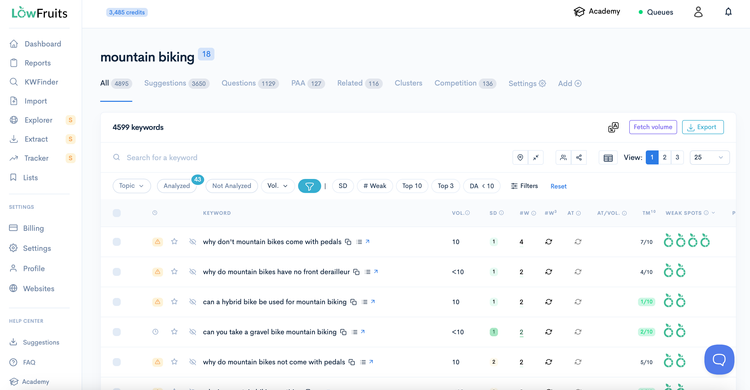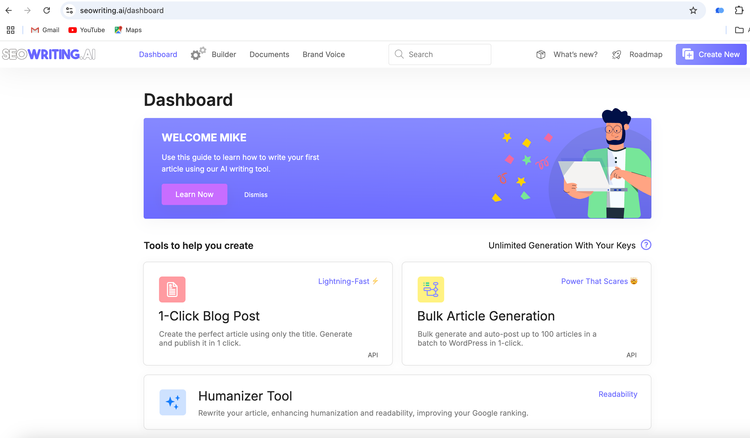What Is Blog Maintenance? Essential Tips

Blogs aren't something where you publish posts and walk away. They need to be maintained, cultivated, and updated. So blog maintenance is important. Blog upkeep is something many people ignore, but it can really pay dividends.

Managing a blog means keeping content fresh, checking security, and improving performance. It's like gardening - ignore it, and weeds grow. Refreshing content monthly boosts search engine rankings. And, website designs need updates every 2½ years to ensure they are still mobile compatible and to enhance site usability.
Blog maintenance is an ongoing effort to keep your site engaging. With WordPress on nearly 40% of top sites, keeping plugins and SEO up-to-date is essential. One out of date plugin can break a site or cause security issues.
Effective upkeep includes setting goals and knowing your audience. Regular care attracts visitors, boosts SEO, and keeps readers coming back. It's not just fixing issues; it's growing and improving your online space.
Understanding Blog Maintenance
Blog maintenance includes regular updates and optimization to keep your site smooth and effective. Here are the benefits of keeping your blog up to date.
Definition and Importance
Blog maintenance means keeping your blog updated and secure. It's vital for making your site relevant, safe, and easy to use. With 94% of first impressions based on design, a well-maintained blog is crucial for grabbing attention. When people don't immediately see what they need they'll bounce
Key Components of Blog Upkeep
Effective blog maintenance covers several important areas:
- Regular content updates
- Security measures implementation
- Performance optimization
- Backup and recovery procedures
- SEO optimization
Benefits of Regular Maintenance
Regular blog maintenance brings many benefits:
| Benefit | Impact |
|---|---|
| Improved SEO rankings | Higher visibility in search results |
| Enhanced user experience | Increased visitor engagement and retention |
| Increased security | Protection against potential vulnerabilities |
| Better performance | Faster page load times and smoother navigation |
| Consistent brand image | Improved credibility and trust |
By focusing on blog maintenance, you make sure your site is valuable to your audience. It also supports your overall online strategy.
Regular Content Updates
Keeping your blog fresh is key to attracting visitors and improving SEO. Content management is more than just posting new articles. It's about ensuring old content is kept up to date and factual.
Studies show that reviewing content every 9-12 months helps keep it optimized for search engines. This practice ensures your blog stays relevant and credible. Letting posts grow stale for over a year can hurt your rankings and traffic.
Effective blog updates involve:
- Planning a content calendar
- Understanding your audience
- Focusing on quality over quantity
- Diversifying content types
- Staying current with industry trends
Regular content updates signal to search engines that your site is active. This can boost your SEO performance without constantly producing new content. It's smart to replace outdated links and information to maintain your search rankings.
Remember, content management isn't just about creating new posts. It's equally important to revisit and refresh older content. This strategy helps maintain your blog's authority and keeps your audience engaged.
"A well-maintained blog is like a thriving garden – it needs regular care and updates to flourish."
By implementing these strategies, you'll create a dynamic blog that attracts new visitors and keeps them coming back for more.
Blog Security Measures
Keeping your blog safe from cyber threats is key in today's world. With 6.8 billion cyberattacks on websites in 2023, strong security is more vital than ever. Let's look at important ways to boost your website protection.
Implementing Strong Passwords
Strong passwords are your first defense against hackers. Mix letters, numbers, and symbols. Don't use common words or personal info. A password manager can help create and keep complex passwords safe.
Using SSL Certificates
SSL certificates encrypt data between your blog and visitors. This keeps sensitive info safe and builds trust. Plus, Google likes SSL sites more, making your blog easier to find. Many people won't visit a site without an SSL certificate in place.
Regular Security Audits
Do security checks often to find weak spots. Look for outdated software and odd activities. Many WordPress plugins have audit tools to help.
| Security Measure | Benefit |
|---|---|
| Strong Passwords | Prevent unauthorized access |
| SSL Certificates | Encrypt data transmission |
| Regular Audits | Identify vulnerabilities |
Blog security is a constant job. Always be on the lookout and update your security to keep your online space safe.
Performance Optimization Strategies
Improving your blog's speed and optimization is key for better user experience and SEO. A quick website keeps visitors interested and boosts sales. Research shows that a half-second faster mobile page can increase sales and lower bounce rates.
To get the best results, try these strategies:
- Compress images to reduce page load time
- Minimize code to streamline site functionality
- Use a reliable hosting service for consistent uptime
- Regularly monitor site performance using tools like Google's Page Speed Insights
Using these methods can greatly improve your site's speed. Websites on Google's first page load in about 1.65 seconds. This shows how fast loading is crucial for top search rankings.
To check your blog's performance, look at these metrics:
- Page load time
- Time to First Byte (TTFB)
- First Contentful Paint (FCP)
- Largest Contentful Paint (LCP)
- Total Blocking Time (TBT)
By optimizing these areas regularly, your blog will stay fast and meet user and search engine needs.
Backup and Recovery Procedures
In today's digital world, keeping your blog backed up is key. Regular backups shield you from data loss due to errors, hacks, or system crashes. For online stores, making backups in real-time is vital to track every update and sale.
Importance of Regular Backups
Blog backups act as your safety net. They keep your business running smoothly and safeguard your efforts. Without them, you could lose important content, customer info, and sales. Studies reveal that good backup plans can prevent major data loss and keep operations going.
Choosing the Right Backup Solution
When picking a backup solution, think about these points:
- Backup frequency
- Ease of restoration
- Off-site storage options
- Data compression capabilities
Cloud backup services are great because they're affordable and flexible. They suit both small and big businesses. Tools like Jetpack VaultPress Backup can save every change to your blog, offering full protection.
Recovery Process in Case of Data Loss
Recovering your blog after a failure is crucial. You need a simple recovery process to cut down on downtime. Your goal should be to get back to normal quickly.
Effective backup and recovery plans do more than just prevent data loss. They keep your business running, improve customer service, boost employee productivity, and save your blog's history. Start a strong backup plan today to protect your blog's future.
SEO Optimization Techniques
Search engine optimization is key for blog success. It helps increase organic traffic and visibility. Let's look at some effective strategies to boost your blog's search engine ranking.

Keyword research is the base of SEO. Use long-tail keywords, which are three or more words. They often perform better than short ones. Place these keywords in titles, headings, and meta descriptions naturally.
Improving your blog's structure is also vital. Use internal links to connect related posts. Aim for 5-10 internal links per new article. This helps search engines understand your content and makes it easier for users to navigate.
"56% of surveyed consumers have made a purchase from a company after reading their blog."
Visuals are important for SEO success. Add images and videos to your posts. Remember to include descriptive alt text for your visuals. It affects how search engines display your content.
| SEO Technique | Impact |
|---|---|
| Moving blog from subdomain to subfolder | 98% boost in organic traffic |
| Optimizing meta descriptions | Increased organic click-through rate |
| Using a sitemap | Improved Google crawling and indexing |
SEO is a continuous effort. Use tools like Google Search Console to track your progress. It takes three to six months for a blog post to rank on Google. With consistent effort and these strategies, your blog's search engine performance will improve over time.
What Is Blog Maintenance?
Blog maintenance is key to a successful online presence. It includes many activities that keep your blog running well. Let's look at the main parts of blog upkeep and how often to do them.
Core Activities Involved
Blog maintenance includes several important tasks:
- Content updates
- Security checks
- Performance optimization
- Regular backups
- SEO improvements
These tasks help keep your blog fresh, secure, and interesting for readers. For example, updating old posts can boost SEO and keep content relevant. A study found that 45% of successful blog posts link to external resources, adding value without needing to write a lot.
Frequency of Maintenance Tasks
The timing of blog maintenance tasks changes:
- Daily: Content updates, spam comment moderation
- Weekly: Security checks, social media scheduling
- Monthly: Performance reviews, legal page updates
Spending about an hour a week on these tasks can greatly improve your blog's health. Remember, 70% of bloggers face challenges with maintenance due to time issues. But, regular upkeep is key for lasting success.
Tools for Efficient Blog Maintenance
Using the right tools can make blog maintenance easier:
| Tool Category | Purpose | Examples |
|---|---|---|
| Blog Analytics | Track page views, time on page | Google Analytics, Jetpack |
| Security | Protect against threats | Wordfence, Sucuri |
| Backup | Secure data | UpdraftPlus, BackupBuddy |
| Blog Monitoring | Check site health | WordPress Site Health, Pingdom |
Effective blog monitoring tools help spot problems quickly. Strong blog analytics offer insights for improving content strategy. Regular use of these tools can increase reader engagement by 40%.
User Experience and Design Updates
Keeping your blog design fresh and user experience top-notch is crucial for maintaining visitor engagement. A well-designed blog not only looks appealing but also functions smoothly. This makes it easier for readers to find and enjoy your content.

Regular updates to your blog's design and user interface can significantly improve its performance. This includes ensuring mobile responsiveness, streamlining navigation, and creating clear call-to-actions. A clean layout and consistent branding across your site contribute to a cohesive user experience.
To stay ahead of the curve, consider these key aspects of blog design and user experience:
- Mobile-first approach
- Intuitive navigation
- Fast loading times
- Readable typography
- Accessible color schemes
Gathering user feedback and analyzing site metrics can provide valuable insights for improving your blog's design. Keep an eye on industry trends and incorporate relevant updates. This ensures your blog remains modern and user-friendly.
| Design Element | Impact on User Experience |
|---|---|
| Mobile Responsiveness | Improves accessibility across devices |
| Clear Navigation | Enhances content discoverability |
| Fast Loading Speed | Reduces bounce rates and improves engagement |
| Consistent Branding | Creates a cohesive and memorable experience |
By prioritizing user experience and regularly updating your blog design, you can create a more engaging and effective platform for your content. Remember, a well-maintained blog not only attracts new visitors but also keeps existing readers coming back for more.
Conclusion
Managing your blog is about keeping your content fresh, securing your site, and making it run smoothly. The key thing is to write and maintain your blog posts so you continue to bring new and fresh ideas to your niche. That's how you'll differentiate your content from your competitors.



